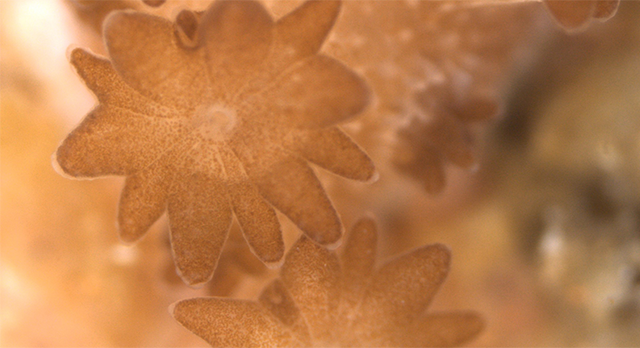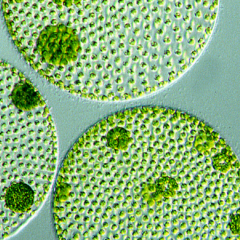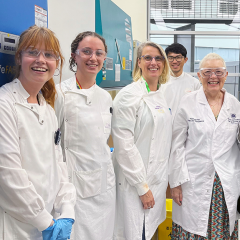Scientists have decoded genomes from algae found in coral, as part of a greater plan to preserve the health of corals and protect the Great Barrier Reef from coral bleaching.
UQ Institute for Molecular Bioscienceresearchers sequenced the genomes of two species of Symbiodinium, co-existing micro-algae that critically provide food and nutrients to corals.
Lead scientist Dr Cheong Xin Chan said coral bleaching is a critical problem affecting the Great Barrier Reef and coral reefs worldwide.
“Symbiodinium are the golden algae that provide nutrients to corals in return for shelter,” he said.

“Under environmental stress, this association of corals and Symbiodinium would break down, causing coral bleaching. If the Symbiodinium do not return, the coral would starve and eventually die.
“By revealing the molecular mechanisms that underpin this coral-algae symbiosis, we can identify how corals and coral reefs adapt to changing environments, and what we could do to help them adapt to improve coral survival.”
Dr Chan said there are over 600 types of coral on the Great Barrier Reef, each co-existing with microscopic organisms.
“Symbiodinium genomes are about half the size of the human genome, but contain about two to three times more genes. They are considered by the research community as some of the most peculiar genomes.
“When comparing the DNA sequences of Symbiodinium with other closely related species, we found that although they are very different from one another, gene functions that are critical to the establishment and maintenance of symbiosis, such as communication signals and stress response, are conserved.
“We also found genomic evidence that Symbiodinium may be capable of sexual reproduction, a trait that creates genetic variation in a population, which would help Symbiodinium adapt better to changing environments."
The research forms part of the international Reef Future Genomics (ReFuGe) 2020 Consortium’s Sea-quence project, an international collaborative effort to generate core genetic data from multiple species of corals and their associated symbiotic algae and microbes.
Read more: Natural selection still at work in people
Great Barrier Reef Foundation Science Program Manager Dr Petra Lundgren said these important research discoveries represent another first for the Foundation’s pioneering Sea-quence project which has unlocked and shared the genetic secrets of coral.
“Through the Foundation bringing together leading universities, research institutions and Reef managers to form the international ReFuGe 2020 Consortium, the Sea-quence project has successfully revealed the genetic data of nine coral species from the Great Barrier Reef,” Dr Lundgren said.
“This new research is the first publication stemming from the Symbiodinium genomes, highlighting the value of high quality genomic data for understanding species co-evolution and the role of symbiosis.
“Researchers from around the world are now able to access this high quality data via a global database and use it to unlock further discoveries which could help corals adapt to their changing environment.”
Dr Chan said genetic data will be used to support the development of new predictive models of stress response, resilience and adaptation.
“Our results greatly extend our understanding of the biology of coral-algae symbiosis, and provide a foundational resource to direct future research to engineer more-resilient coral reefs,” he said.
“This knowledge will guide decision-making strategies in the conservation and restoration of the Great Barrier Reef in the face of climate change.”
The research was published in international scientific journal Communications Biology. A Behind-the-Paper post is available on the Nature Ecology & Evolution Community.
The research was driven by Dr Chan with Professor Mark Ragan and three early-career researchers at IMB: Dr Huanle Liu, Mr Timothy Stephens, and Mr Raúl González-Pech.
The Reef Future Genomics (ReFuGe) 2020 Consortium is a collaboration among the Great Barrier Reef Foundation, The University of Queensland, Australian Institute of Marine Science, Great Barrier Reef Marine Park Authority, Bioplatforms Australia, James Cook University, King Abdullah University of Science and Technology, and Australian National University. This work was supported by Rio Tinto, Bioplatforms Australia through NCRIS, the Fitzgerald Family Foundation and the Australian Government.
Help IMB research
IMB newsletters



